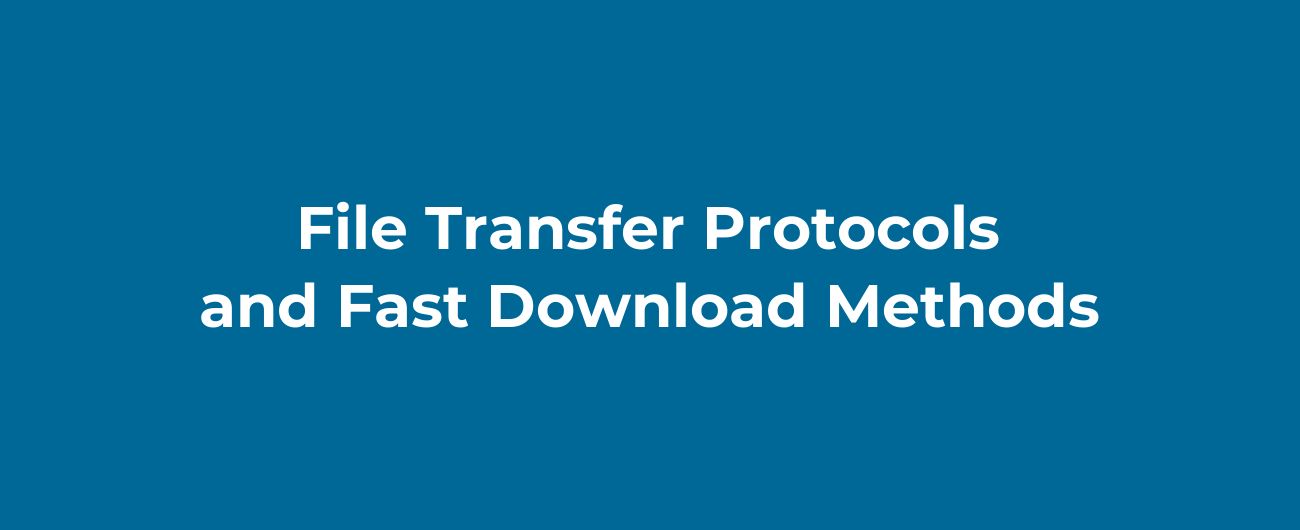
Welcome to Examplefile.com, your go-to source for sample files. In this blog post, we'll explore different file transfer protocols and fast download methods to optimize your file transfers. Whether you're a professional or a casual user, understanding these concepts can greatly improve your file transfer experience. File transfer protocols are sets of rules and procedures that govern the transmission of files between devices over a network. They ensure reliable, secure, and efficient transfer of data. Here are a few popular protocols: FTP is one of the oldest and most widely used file transfer protocols. It allows you to transfer files between a client and a server. FTP is known for its simplicity and compatibility with various platforms. However, it lacks encryption, making it less secure compared to modern protocols. SFTP is an extension of the SSH (Secure Shell) protocol. It adds encryption to FTP, making it a more secure option for file transfers. SFTP provides authentication and data integrity, making it suitable for sensitive data transfers. It's commonly used by businesses and organizations for secure file sharing. HTTP is primarily used for transferring HTML web pages, but it can also be used for file transfers. However, HTTP is not optimized for large file transfers and can be slower compared to dedicated file transfer protocols. It's more suitable for downloading small files or accessing web-based file repositories. HTTPS is the secure version of HTTP. It adds encryption and authentication to ensure secure communication between the client and the server. HTTPS is commonly used for secure online transactions, but it can also be used for secure file transfers. It's a good option when security is a top priority. In addition to choosing the right file transfer protocol, utilizing fast download methods can significantly speed up your file transfers. Here are some methods to consider: Download managers are software applications that optimize file downloads by splitting files into multiple parts and downloading them simultaneously. They also support pause and resume functionality, enabling you to continue interrupted downloads. Some popular download managers include Internet Download Manager, JDownloader, and Free Download Manager. P2P file sharing allows users to download files directly from other users' devices. This method utilizes the combined bandwidth of multiple users, resulting in faster download speeds. BitTorrent is a widely used P2P file sharing protocol that enables efficient distribution of large files across a network. CDNs are networks of servers strategically located around the world. They store and deliver website content, including files, from the server closest to the user's location. By distributing the workload across multiple servers, CDNs optimize download speeds. Popular CDNs include Cloudflare and Akamai. Optimizing your network bandwidth can greatly improve download speeds. Consider the following tips: Choosing the right file transfer protocol and utilizing fast download methods can greatly enhance your file transfer experience. FTP, SFTP, HTTP, and HTTPS are widely used protocols, each with their own strengths and weaknesses. Download managers, P2P file sharing, CDNs, and bandwidth optimization techniques can further optimize your download speeds. Experiment with different methods and protocols to find the best solution for your specific needs. At Examplefile.com, we provide a wide range of sample files for you to practice and experiment with. Check out our collection and start optimizing your file transfers today!File Transfer Protocols and Fast Download Methods
Introduction
Understanding File Transfer Protocols
1. FTP (File Transfer Protocol)
2. SFTP (Secure File Transfer Protocol)
3. HTTP (Hypertext Transfer Protocol)
4. HTTPS (Hypertext Transfer Protocol Secure)
Fast Download Methods
1. Download Managers
2. Peer-to-Peer (P2P) File Sharing
3. Content Delivery Networks (CDNs)
4. Bandwidth Optimization
Conclusion